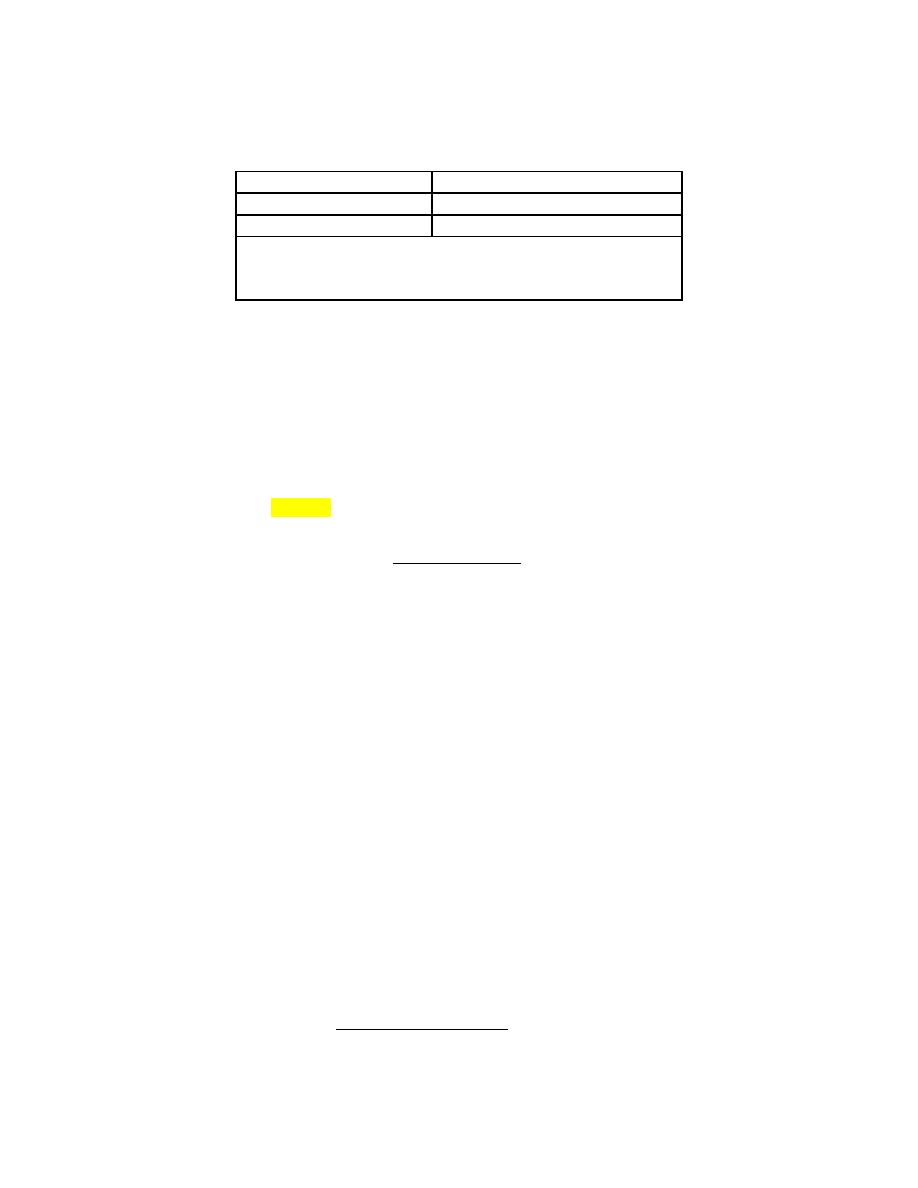
CEMP-E
TI 850-02
AFMAN 32-1125(I)
1 MARCH 2000
Table 3-5. Estimating Locomotive Tractive Effort
Speed Range
Tractive Effort
Starting to 10 MPH
TE = 30 x HP
Over 10 MPH
TE = 300 x HP / V
TE = Tractive Effort (in pounds)
HP = Locomotive Rated Engine Horsepower
V = Traveling Speed (MPH)
(2) Adhesion Limit. Regardless of locomotive power, usable tractive effort is always limited by wheel-
rail adhesion. For design purposes, usable locomotive tractive effort should not exceed W/4, where W is
the weight of the locomotive in pounds.
d. Determining Tonnage Rating.
(1) While tonnage ratings are commonly given in gross trailing tons (total weight of cars and loads), a
convenient practice is to express tonnage ratings as the number of loaded cars a locomotive can pull,
using an average or representative car and load for estimating purposes. This can be done using
equation 3-2, along with table 3-6 for selecting design car gross weight based on the nominal car carrying
capacity.
TE
NCars =
Eq 3-1
[3 + (20 %G )] Wg
Ncars = Number of cars locomotive can pull.
TE =
Usable locomotive tractive effort at desired speed (lb).
%G =
Maximum ascending gradient long enough to contain the whole train (percent).
Wg =
Gross weight of representative car (tons), from table 3-7.
The constants 3 and 20 in equation 3-2 indicate that an average car has a rolling resistance of 3 lb for
each ton of its gross weight and that all equipment requires 20 lb to lift each ton of weight up each
percent of grade. Any curvature on the maximum grade is assumed to be grade compensated, as
described in paragraph 4 of chapter 3.
TE
G=
- 0.15
Eq 3-2
+ (Ncars Wg )]
20 [ Weng
3-5



 Previous Page
Previous Page
